How a Financial Model Can Help You Lock In Top Investors
Jan 25, 2024

By Forecastr (Techstars 2020)
Raising capital is a crucial skill for every founder. While a compelling pitch deck can grab an investor’s attention, it’s often a solid financial model that seals the deal. This post walks through some best practices for using a financial model in the fundraising process. As you’ll see, a model can create opportunities to build trust and develop lasting relationships with investors.
Financial models: More than just numbers
At its core, a financial model simulates your operations, market dynamics, and strategic initiatives into quantifiable metrics an outsider can easily understand. It provides a comprehensive picture of where your company is, and where it’s going, with realistic projections for revenue, costs, and cash flow.
In fundraising, a model is a tool that tells the story of your company. It bridges the gap between your vision for the future and the tangible results you’ve already generated.
Planning: Estimate your capital requirements with precision
A well-structured financial model helps you break down your revenue and expenses, so you know where your money is coming from and where you’re spending it. With this insight, you can take a deep dive into your future cash flow to understand exactly how much capital you need to keep your business growing smoothly.
A model also lets you dig into important metrics like Customer Acquisition Cost (CAC) and Lifetime Value (LTV). You can analyze unit economics today and in the future to benchmark your business against industry standards.
This level of precision planning gives you more control during the fundraising process.
Pitching: Develop a perfect one-two punch
A pitch deck and a financial model play distinct yet complementary roles in the fundraising process. Think of your pitch deck as a quick jab. It’s brief, catchy, and designed to grab the investor’s attention.
Your financial model, on the other hand, is the big knockout punch. It lets you go into depth about your business in the investor’s language: numbers. It is the foundation for your narrative and a reference point for every question and objection.
You open the conversation with a compelling narrative in your pitch deck. Then you transition to your financial model to show that your narrative is backed by detailed metrics using real data.
Diligence: Roll out the red carpet
Due diligence is all about authenticity, transparency, and responsiveness. A financial model lets you roll out a red carpet to welcome investors in to evaluate your assumptions, growth trajectories, and risk mitigation strategies.
A model not only validates your claims but also builds trust. It shows that you have more than just a great idea — you have a solid foundation of data-driven planning.
Investors are in the game for the returns. Your model is their best resource to understand what kind of return they should expect and the risks that could stand in the way. It allows them to scrutinize your strategies and make specific recommendations to address their concerns.
Closing: Set the stage for a win-win deal
The closing stage is the culmination of all your prior interactions with an investor, where you settle terms, receive a valuation, and solidify commitments. Your financial model can be a powerful ally at this stage, guiding you and the investor to a mutually beneficial agreement.
If you have non-negotiable terms, your model can help you justify them and illustrate your underlying reasons. You can also use your model to analyze the outcome of different deal structures and advocate for the changes you need. This is invaluable when complex clauses like liquidation preferences and ratchets come into play.
Of course, negotiation is always a two-way street. Your investors should also have access to your financial model to support their case in negotiating the terms they are seeking. When both parties align on goals, priorities, and timelines, you can forge a prosperous partnership that supports your growth and the investor’s return.
If you’re ready to raise capital but don’t have a financial model, you can use Forecastr’s free spreadsheet templates to get started right away.
About the Author

Forecastr
Forecastr is an out-of-the-box finance function for your business. We provide the tools and support you need to create an investor-grade financial model. Learn more at forecastr.co.

